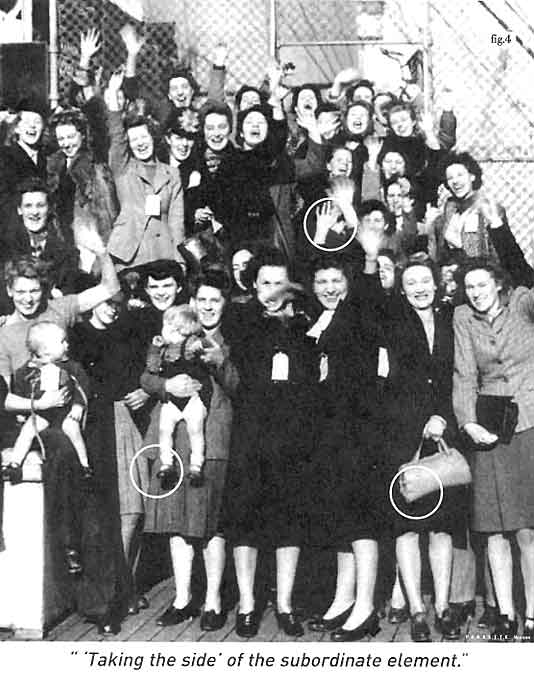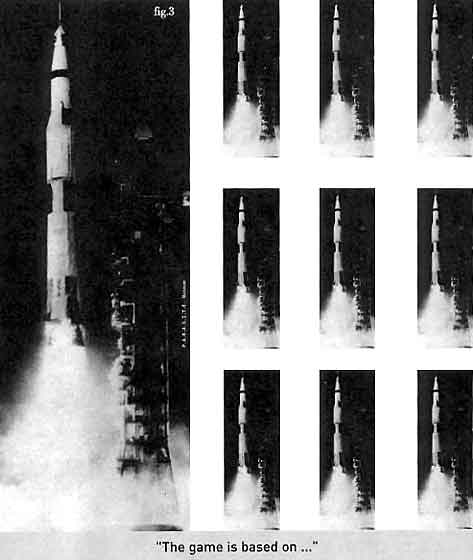| Rastko Moènik |
|
| ...ABOUT THE ART
|
We hardly seem to notice how much discourses which accompany
artistic practices, like to be guided by simple dichotomies.(1)
It has become a familiar mannerism to speak and write in the
terms of 'East and West', of 'before and after' with respect
to the East, of 'modern and post-modern' with respect to both
East and West. Differences certainly exist: but are they dichotomic?
Even if we grant dichotomy its rhetorical value of a convenient
starting point, one still wonders why discourses about artistic
practices should be unable to invent their own exordial topoi,
and why they feel the need to borrow their hors-d'oeuvre
from other discourses, from political science, historiography,
philosophy, from various ideologies… What could be the relation
between those two features: conceptual dualism and discursive
parasitism?

Dichotomies we have listed, and one could think of more ('mainstream/alternative',
'dominant/subaltern'), divide the discursive universe into
two non-symmetric domains: into the horizon from where
a discourse is being proffered, and into its specific
exterior. Crude as they may be, they offer simple and
easily manipulable ways of how to organise 'the world' and
the reflection upon it; above all, they provide a suitable
'point of view' from where to develop whatever one
would like to tell. They support discursive elaboration,
and do it in a somewhat paradoxical way. For if such a dichotomy
is presented by a particular discourse in the way of 'self-foundation',
the foundation it actually offers is imported from some other
discourse, from another place, from an alibi.
Once comfortably seated upon a borrowed foundation, discourse
'about the art' easily, and willingly, continues to
import: concepts, turns of phrase, procedures of thought…
so that, turning the pages of a catalogue, one often wonders
whether it is not there that the real 'exhibition'
takes place. It certainly makes one muse upon the contemporary
intellectual landscape: the easiness with which words shed
off their conceptual loading…; the arrogance of a semi-commercial
babbling at appropriating solid products of honest intellectual
endeavour…; rituals of faked communication…; amalgamation
of conceptual relics with the crudest ideological constructs
- all these features, so familiar to be scarcely still perceptible,
actually challenge our deepest certainties of communication,
maybe even of socialisation.
Let us attempt a positive formulation of the above 'negative'
features.
1. Dichotomism: it has nothing to do with a presumed
'structure of the world'; nor is it a pure 'rhetorical' device.
It is rather an extravagant way this type of discourse takes
to provide itself with a subject. This means many things.
First of all, it means that this is the way how this type
of discourse establishes itself as an ideological discourse.
Secondly, it shows that this particular way of holding an
ideological discourse proceeds, as it were, as an inversion
of the 'standard' or 'usual' mechanism of ideological interpellation.
In the 'standard' or 'usual' situation, an individual unwittingly
'yields' to ideological interpellation, while here a discourse,
almost in a state of potentiality, or of 'becoming', hands
itself over to another discourse and, through this passive
act of surrender, furnishes itself with a subject.
2. Parasitism: it is true that this operation is, in
some way, 'profitable' for the discourse 'about the art'.
It yields the absolute condition of its possibility, at least
for its possibility as an ideological discourse - its subject.
On the other hand, though, this 'profit' is gained in return
for the utmost sacrifice - the discourse 'hands itself over'
in its entirety even before it comes into existence. This
is a paradoxical exchange: the discourse 'gives' itself over
in its entirety in order to 'be'. The paradox is, so
to say, double: firstly, the act of exchange precedes the
object of exchange which is only constituted by this very
act itself; secondly, since the giving party is only
constituted in the act of exchange, the act precedes its own
agent. And, as all this were not enough, the object of exchange
is identical with one of the agents of exchange: the giving
party. The discourse 'about the art' constitutes itself in
the act of giving itself over to another discursive instance
- and receives in counterpart the absolute condition of its
possibility, its subject. This subject is always-already 'ideologically'
interpellated by some other discourse which, in this respect,
functions as an ideological discourse, regardless of its
'original nature' (i.e., regardless of the way/s it otherwise
functions in other respects).
We can now us restate our description.
Without borrowing, discourses accompanying artistic practices
seem to be unable to establish themselves, to situate themselves,
to think themselves. They are incapable of 'being',
unless they hook themselves to some other discourse. They
are expelled to foreign discursive horizons, and pushed to
seek elsewhere a signifier which they constitutively lack:
the signifier of subjectivation.
All this may sound 'frustrating'. But, on the other hand,
it may be that we feel 'frustrated' only because we are shaken
out of our usual ideological comfort. Does this paradoxical
constitution of a pseudo-'ideological' discourse not destroy
certain illusions upon which depends the 'self-satisfaction'
of other ('normal', 'standard') ideological discourses? Could
there be a more candid recognition that no discourse can be
self-sufficient? Could there be a simpler way to expose the
deaf mechanism of subjectivation?
At this point, we may recall that our concept of the 'art'
rests upon a modern notion and, consequently, it depends upon
the l'art-pour-l'art understanding of the art: for
us, it is in the moment of l'art-pour-l'art that the
'reality', the Wirklichkeit of historical existence
of 'the art' raises to the level of its concept. If we conceive
of 'the art' as of an autonomous realm - then we should
asks ourselves: With respect to what 'the art' is supposed
to be 'autonomous'? We may certainly claim that 'art' is an
'autonomous social domain' - but then, it is a constitutive
illusion of the capitalist 'social formation' that all the
domains that count as domains are supposed to be, or
appear to be 'autonomous', or are presenting themselves as
such: the economical sphere, the political sphere, the so-called
'civil society', 'culture' etc., etc.
To avoid triviality, we would rather describe the transition
from 'non-autonomous' to 'autonomous' 'art' (a transition
that can only be described retroactively, hence anachronistically)
as a transition from a situation where artistic practices
were 'founding' themselves upon various other ideologies,
to a situation where the 'art' takes itself for its own ideological
foundation.
According to this view, the art would 'take place' within
the field of ideology, but it would not be ideology
itself. A specifically 'artistic' operation would then introduce
an internal distance within the ideological field - a distance
which would at the same time preserve ideological mechanisms
and their effects, and expose them as 'lure', 'illusion',
etc. The aesthetic effect would then proceed from this 'preserving
exposure' of ideological machinations and their products:
it allows to 'enjoy' the ideological lure without succumbing
to it, it exposes the 'charm', the 'charmed eye' and the magicians
trick, in one and the same irritatingly-soothing gesture.
A reduced model of the specifically aesthetic procedure would
be the transvestite practice to promote into sex-icons personalities
of the entertainment industry. By merely being transposed
upon a transvestite scene, the same person who, within the
context of her 'original' production, was only a repressive
piece of kitsch, transforms herself into a fascinating
question-mark. Another analogy (or maybe more?) would be the
punk strategy to compose elements of dominating styles and
hegemonic culture into a new and subversive collage; or another
punk-like strategy which consists in an unreserved identification
with a mechanism or a 'representation' of the dominant ideology
and thus pushes it over the brink of its own self-evident
'normality'…
We can now see that the way how discourses 'about the art'
pre-empt their own possibility by borrowing other discourses'
dichotomies, somewhat resembles the aesthetic procedure. When
a speaker seizes upon a pre-fabricated dichotomy to situate
her- or himself as the discursive subject, s/he cannot avoid
producing drastic effects. Still, the nature of the effect
depends upon the strategy of 'borrowing'.

The effect may reproduce the ideology from where it
borrows, as if when the Slovene Prime Minister Drnov¹ek warned:
'This is the choice between Europe and the Balkans,' - presumingly
speaking from 'Europe'. Although he situated himself on the
other side of the great divide, Croatian President Tudman
achieved the same effect of the most degraded servility when
he said: 'I thank the Minister /Alain Juppé/ for having come
to our dark Balkans.' While the two speakers situate themselves
differently, the ultimate effect of their utterances is the
same, since they both identify themselves with the ideological
point of view from which the non-symmetrical and value-loaded
dichotomy 'Europe vs. the Balkans' makes a self-evident 'sense'.
But the effect may also be subversive, as in the '68 slogan:
'Nous sommes tous des sales Juifs.'
'Discourses about the art' evidently achieve both types of
effects. This is what used to be called 'ideological struggle
in culture'. But, with respect to the 'art', the two discursive
strategies are not symmetrical: it is only the subversive
discourses which formally correspond to the aesthetic
procedure.
We can see what is 'mimetic' about our 'art': not the 'arts'
themselves, but discourses about 'the arts'. They all,
or at least most often, mimic the initial gesture by which
artistic practices anchor themselves in an ideological alibi.
And some of these discourses further imitate the aesthetic
procedure of introducing an internal distance into the field
of ideology. Only the later can claim some sort of relation
with artistic practices.
What sort of relation? It is now evident that 'discourses
about the arts' are not of the analytic nature; rather, they
are 'analogous': their structure is, to different degrees,
'analogous' to the aesthetic procedure. Some take only the
initial gesture; others carry the analogy further and shape
their procedures on the aesthetic model.
We may take an old word with which 'discourses about the
art' were trying to grasp their object; the expression is
much more justified if applied to these discourses themselves:
representation. Discourses about the 'art' represent,
in their procedures, practices and objects they are 'about'.
But then discourses 'about the arts' inscribe themselves within
the horizon of the dichotomy 'discourse/representation' -
an opposition that announced the advent of the modern notion
of the 'art'. Until Lessing, discourse was like representation,
ut pictura poiesis. In his Laokoon, he, too,
parasitically borrowed his concepts and clinched them into
a set of dichotomies: Mahlerei und Poesie, space and
time - representation and discourse.
At its beginning, modern discourse on art situates itself
in the terms of this radical dichotomy 'discourse/representation'.
Lessing, though, does not seem worried (nor indeed fascinated)
by the fact that it is within a certain type of discourse,
differing from the discourse of Poesie to be sure,
but still within a discourse, that he is developing
this dichotomy 'discourse/representation'. He does not seem
to notice that the discourse, that his discourse, is
in the process of exhibiting its capacity to embrace itself
and its other, or at least to articulate an integrated
theory of itself and of its specific other - a theory
of 'discourse and representation'. Lessing is all too
happy to have a dependable criterion of the internal differentiation
of the domain of the arts, a criterion that is both 'natural'
and metaphysical - the ultimate opposition of 'space and time'.
He skips over the really outstanding achievement of his own
discourse.
Blind for his own bravura, Lessing hastens to catch
what the 'bravura' in the different arts may be, and
defines for us what 'the art of the art' is: it is precisely
to transcend, to break through the immanent limitation of
the specific artistic domain. In Mahlerei, the art
of space, the real artistic achievement is to suggest
movement, that is, a temporal phenomenon; in Poesie,
the art of time, it is to render an image, a 'poetische
Gemälde', a spatial phenomenon. The artistic bravura
consists in rendering time in space, movement in representation
- and space in time, Gemälde in discourse. The art,
Lessing tells us, consists in breaking through a specific
symbolic impossibility.
Having the historical experience of the modern, i.e., 'Lessingian',
art to assist us, we were able to reformulate Lessing's intuition.
Although we abandoned his 'physicalist' terms (the terms of
'time and space') and gave up the heroic jargon of 'doing
the impossible', the artistic tour de force appeared
no less grandiose to us. Situated in the human world of the
'social link', i.e., in the world of ideology, artistic practices
continue to achieve 'the impossible', and to break through
seemingly unyielding horizons.
Our reformulation permitted us to understand why 'the discourse
about the art', and Lessing's Laokoon in the first
place, is able to 'embrace itself and its other': why it can
be genuinely reflexive, and why it can establish a controlled
and reflected relation to its specific other. In short: why
it is able to become theory.
The main reason, we have seen, resides in the capacity of
the discourse 'about the art' to represent the 'object' it
is about - not on the level of 'semantics', not on the level
of effects of sense, but in its procedures. But now
we can say even more: it is in this way, in the way of 'mimicking
the aesthetic processes in its procedures', that the discourse
'about the art' succeeds to incorporate its specific other
- the representation. And it is on this 'meta-level'
that it finally - represents the 'art', for it performs
its very artistic bravura, it achieves 'the impossible'
by rendering 'representation' within the horizon of 'discourse'.
This, of course, opens into an infinite regress: it is by
representing the representation that the 'discourse
about the art' represents the 'artistic' representation
which, in turn, represents the representation
of ideological representation… But this is a regress
that can be stopped - or indeed continued - at any point,
depending on the aesthetic doctrine and theoretical disposition
of the performer. For the 'vicious circle' does not turn on
the level of 'representation', on the level of 'semantic'
effects: it is being propelled by operations on the level
of discursive procedures or aesthetic processes - and it is
there that it can be continued or stopped at any moment.
And it is precisely within these interstices between 'the
representation' and 'the discourse' (which 'represents'
representational and discursive procedures by its own discursive
procedures) that the strategies of the discourses 'about
the art' are being performed. The position they take within
the interpretational confrontation, i.e., in the cultural
class-struggle, depends, so to say, upon the moment when they
decide to stop the regress, upon the point where they break
the circle… Needless to say, it is the subversive strategies,
those that dissipate illusions and break through the charms,
that are really 'faithful' to their object - and consistent
in their discursive project itself.
Still, there is no a priori necessity about where a
particular discourse 'about the art' will situate itself,
on which side of the barricade it will end.
It may hardly be necessary to add that the same holds true
about aesthetic practices. After the massive outburst of cultural
fascism that helped to prepare, to trigger, and to sustain
the post-Yugoslav wars, and which continues its sale besogne,
it is almost obscene to warn that 'art', 'aesthetics', 'culture'
are not unambiguous, do not guarantee against this or that,
do not have a predetermined, even less a necessarily positive
role in society and in history…

We can explain this ambivalent efficacy of 'the arts' by
further elaborating on the idea of aesthetic procedure which
we proposed above. For the sake of brevity, we will have to
keep our extra-aesthetic analogies. 'Secondary elaboration'
upon an ideological opposition can start by 'taking the side'
either of the dominating term (e.g., 'Europe'), or of the
subordinate term (e.g., 'the Balkans'). This initial move
in no way predetermines the final effect of the operation:
'taking the side' of the dominant element may result in the
reproduction of its repressive efficacy (as in Slovene Prime-Minister's
utterance); or in its aesthetisation (as in transvestite practices);
or it may subvert the original opposition (as in some punk
strategies). Conversely, while 'taking the side' of the subordinate
element certainly introduces some sort of a 'distance' within
the initial opposition, it can either result in a particularly
perverted affirmation of the dominant term and of the corresponding
ideology (as in President Tuðman's case), or it can subvert
the opposition and its ideological background (the '68 slogan).
To summarise: one can either opt for the dominating term in
the opposition or for its subordinate term; in either case,
one can either identify oneself with the particular ideology
epitomised by the opposition, or in various ways 'work' on
it and transform it. The result does not depend on the simple
act of articulating one's discourse to a pre-constructed opposition
and its background ideology, in order to support one's 'point
of view' by one of the opposed elements.
The final result depends upon whether an additional operation
is performed or not: if the supporting ideology is additionally
articulated to some other ideological discourse, then there
will be a supplementary elaboration of the 'borrowed' ideology,
and the result will not be its reproduction; if there is no
supplementary contextualisation, then the discourse submits
to the 'borrowed' ideology and reproduces it - either simply
(as in Drnov¹ek's case) or with ideological value added (as
in Tuðman's case).
Discourses 'about the art' may engage in any of these strategies.
If there is to be an aesthetic effect, though, then the supplementary
operation and additional ideological 'contextualisation' are
necessary.
It follows that the aesthetic process necessarily 'works'
upon at least two ideological horizons. Discourses 'about
the art' that fulfil the qualifying condition as set above
(i.e., the condition that they 'represent', in their procedures,
the aesthetic process), will do the same. This means that
their structure enables discourses 'about the art' to be subversive
in their treatment of ideological discourses. But what does
this mean as to artistic formulations and aesthetic processes?
It certainly endows artistic procedures and aesthetic processes
with a subversive capacity. But this capacity to subvert is
itself a consequence of the necessity imposed upon any artistic
procedure, to 'bring together' or to articulate at least two
ideological horizons.
Consequently, eventual 'subversiveness' is not the ultimate
feature of artistic formulations and aesthetic practices.
Their capacity to subvert is only one of the possibilities
opened by their 'inter-discursive' structure.
From an irreverently sociological perspective, one could
say that 'the art' articulates symbolic registers frozen in
counter-position, in dichotomy, maybe torn by irreducible
contradiction. This suggests that 'the art' may be an invention
by which modern societies supplement to their lack of what
in other places, in other times, was practised as shamanism.
Has not Levi-Strauss contended that the shaman eases the tension
among irremediably opposed and mutually irreducible symbolic
registers, that he provides the fleeting effect of totality,
the necessary, although never accomplished, condition of human
co-existence?
We have seen that our discourses 'about the art' do not tell
us much about their object; paradoxically, they rather re-present
its efficacy. They enact the transversal function of
the art in the minimalist form of a dualism. They freeze the
artistic process in the mechanism of subjectivation. Under
the pretext of aesthetics, they engage in a sort of meta-ethical
exercise: for the dimension where the artistic process performs
its 'reconciliatory' function, is subjectively experienced
as a domain where symbolic systems clash, where the human
being confronts impossible choices - in short, it is the locus
of the subject.
We should therefore probably reverse our usual understanding
of the relation between artistic practices and those practices
which accompany them. We have grown used to the notion that
'the art' could not survive without all those institutions
and practices that form its vivid paraphernalia. This image
may well participate to a spontaneous social censorship which
dissimulates a much more poignant reality. It may well be
that institutions, practices, individuals are drawn towards
the ambiguous 'reconciliatory' effects of artistic practices
in a nostalgic search of an ever lost, fundamentally utopian
totality - and they are at the same time repelled from these
effects because artistic practices present the totality as
an illusion, as a recontre manquée, or maybe as a dangerous
self-delusion.
This view: that all those many, heterogeneous, noisy activities
and institutions which press themselves around artistic practices,
lend some sort of 'support' to the 'art' - feeds on the defunct
romantic ideology of the 'a-social nature of the art'. Presumably,
the 'art' needs to be tamed, domesticated - presented and
represented, explained and interpreted. Should we then conclude
to some sort of an immanent failure of the artistic project?
For why should it otherwise need this secondary elaboration,
this re-presentation of representation, repetition of its
effect, whatever the effect might be? A simple, but insistent
feature should warn us against fast and easy judgements: practices
'about' the arts are just as irreducible to each other as
they are irreducible to artistic practices and to their effects.
What is more: even within the same 'genre', individual critical
or curatorial or interpretive practices are often mutually
exclusive, and always irreducible to each other.
For quite some time now, it has become impossible to pretend
that a 'work of art' exists somewhere in its presumed innocence:
the filters, écrans, its supplements are always already part
of it. We should now add an additional complication: even
among themselves, these 'supplements' do not really supplement
each other. Our agonistic civilisation does not really allow
for shamanistic effects.
1. Most of this text is due to long conversations
with Borut Vogelnik; the initial idea was first presented
as an invitation to an IRWIN project which, for financial
reasons, could not be realised.
Rastko Moènik: sociologist of culture, lecturer at the department
of Sociology at the Faculty of Arts in Ljubljana.

Illustration: Tadej Pogaèar www.ljudmila.org/scca/parasite
|

